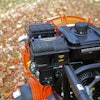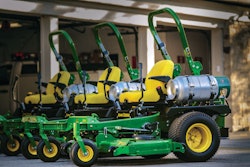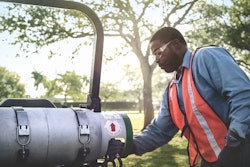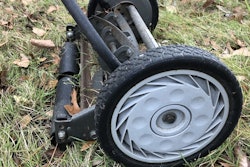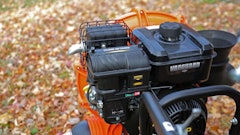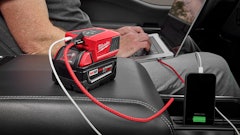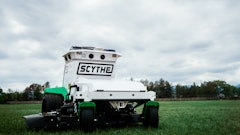
When it came down to adopting battery-powered equipment for its maintenance projects, Everthrive Landscape Co. in Riverside, Calif., ensured it was ahead of the curve.
One of those maintenance projects comprises a gated community with scenic lakes and a lot of foot traffic, pedestrians and landscapes right up against homes, according to Jonathan Caceres, CEO and managing partner of Everthrive.
“We started out in advance looking at this because we figured it was coming down the pipeline and wanted to be ahead of the game when legislation did get us to mandate electric equipment,” says Nick Mokhlessin, COO and managing partner of Everthrive. “We vetted several manufacturers and talked to the clients about the benefits it would bring them since its a homeowners' association (HOA). A lot of the noise and fumes that go along with traditional gas-powered equipment can be seen as noxious, so this was an added benefit to the residents.”
Caceres also notes that maintaining sites using electric equipment can be used as a tool to promote a better quality of service.
“Once they see and hear how quiet it is compared to gas-powered equipment, it’s a great approach to getting certain types of work,” Caceres says.
To maintain the sprawling community, five to six Everthrive employees visit the site daily—since February 2023—and use Milwaukee Tool’s lineup of battery-powered equipment, including hedge trimmers, mowers, string trimmers and backpack sprayers.
One major benefit of the tools, Mokhlessin says, comes with the equipment’s total weight—or lack thereof.
“We had our crews test them, and this equipment seemed to be the lightest. It really did reduce quite a bit of fatigue for the crew members who are utilizing it for eight hours a day,” says Mokhlessin.
Run time concerns are eliminated, Caceres says, by the fact that the HOA has the facilities to charge equipment there. Crews at the location clock in and out daily from the site.
“Depending on the infrastructure, charging could be a challenge, but we constantly have access to charge equipment, and because of that, the crew never has to leave the site to get fuel, whereas if we were using gas-powered equipment, they would have to go off-site to fill up gas cans, and there’s a big time and expense (factor) to that,” Caceres says.
Overall, Mokhlessin says the company is enthusiastic about using electric equipment to maintain various sites.
“Just like everyone else in the industry, we had apprehensions when we were considering moving forward to electric, but having put it into practice, it’s keeping up,” Mokhlessin says. “And, it’s not just the way forward, but it’s the right thing to do for our crew members and our clients.”




